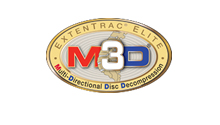
Spinecare Topics
Epidural Fibrosis
Epidural fibrosis refers to the formation of scar tissue, which forms over the coverings of the spinal cord and nerve roots within the epidural space of the spinal canal. This is often related to back surgery. Scarring (fibrosis) is part of a normal repair process after tissue becomes injured whether the result of surgery or other causes. If to much scar tissue develops or if it does mot not breakdown it can lead to a painful condition. The extent of fibrosis is usually related to the extent of injury or in the case of surgery to the extent of surgical dissection and bleeding. Fibrosis can compress, irritate and result in abnormal traction on spinal nerve roots. Fibrosis can compromise blood flow to vital structures including the spinal nerve roots.
The presence of fibrosis is not always limited to the epidural space of the spinal canal. It can also develop within a spinal nerve, and thus compromise the function of the individual nerve fibers within the spinal nerve. This creates a significant diagnostic and treatment challenge. This is referred to as intradural fibrosis. It can not successfully be treated with surgical decompression. Scar tissue may contribute to chronic inflammation as well as chronic pain.
As many as one fourth of individuals who develop persistent back pain after surgery have been found to have significant epidural scar (fibrosis). The presence of peridural (epidural) fibrosis is implicated in approximately 3-10% of cases of failed back syndrome (FBS) after spine surgery. The presence of fibrosis is not always associated with symptoms.
Epidural fibrosis occurs more often in adults and with equal prevalence in males and females.
The most common signs/symptoms of epidural (peridural) fibrosis is :
- Midline back or neck pain
- Back or neck stiffness
- Radiating nerve pain
- Numbness
- Muscle weakness
- Limb movement induced pain
- Tension and traction related nerve pain
Spinal X-rays do not show scar tissue (fibrosis). X-rays may reveal the site of spine injury or surgery where scar tissue is more likely to be present. Computerized tomography (CT) scan may demonstrate abnormal soft tissue density compatible with scar but MRI is the test of choice for evaluating spinal scar tissue (epidural fibrosis) . The use of chemical contrast agents with MRI help to brighten up scar tissue. This extra step helps to differentiate epidural fibrosis from other types of spinal tissues including recurrent or residual disc material. MRI can be used to evaluate the relationship between scar tissue and surrounding tissues such as the spinal nerves and pain sensitive membranes in the spinal canal. In special circumstances a small camera may be placed into the spinal canal in an attempt to locate and reduce epidural scarring. This diagnostic approach is referred to as epiduroscopy.
2
















